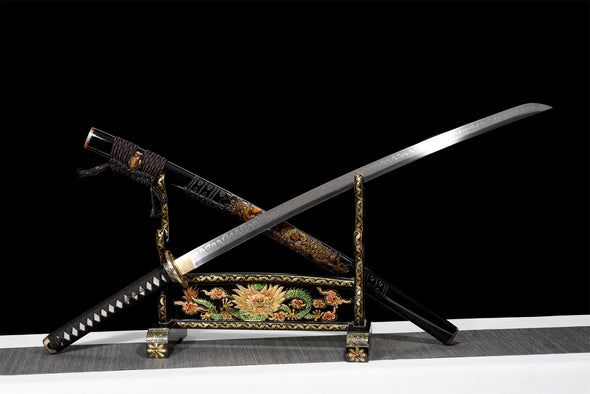The Samurai sword or the katana is more than just a weapon in Japanese tradition. It is also a work of art that showcases the skill and creativity of Japanese artisans. One of the significant aspects that set the Samurai sword apart is the Hamon.
Hamon refers to the wavy pattern that appears on the blade of a katana. It is a result of the differential hardening process done on the blade during forging. The role of Hamon in Japanese samurai sword in the United States Aesthetics is not only limited to the pattern it creates but also to its functional importance.
In this blog post, we will explore the significance of Hamon in Japanese Samurai Sword
Aesthetics and the factors that contribute to its aesthetics.
The Origin of Hamon
The origin of Hamon can be trace back to the Heian period. Initially, the Hamon was use to differentiate a sword from a regular steel rod. Later, as Japanese sword forging techniques evolved, Hamon became a critical aspect of Samurai sword aesthetics.
Hamon, pronounced as “hah-mon,” means “temper line” in Japanese. It is a visible line that runs the length of a Japanese sword blade and separates its harder, cutting edge from its softer, spine. Hamon is create when the swordsmith heats and cools the steel in a particular way during the forging process. The hamon is, therefore, a direct reflection of the swordsmith’s skill and craftsmanship.
There are many types of hamon, each with its unique pattern and aesthetic appeal. Some hamon patterns are made through differential hardening, while others are creat through selective clay application during quenching. Every hamon pattern is unique, and sword enthusiasts often study hamon patterns to discern which swordsmith made each sword.
The Science of Hamon
The Hamon is a result of differential hardening. It means the blade’s edge is hardened differently from its spine to have a tougher and sharper edge while maintaining the blade’s flexibility. The process involves heating the blade and subsequently quenching it in water during forging. The differential hardening also results in the distinct line between the hardened edge and the softer spine that appears as Hamon.
The Hamon Pattern
The Hamon pattern is the result of the hardening and quenching process. The pattern can be straight irregular or wavy and its appearance depends on various factors such as clay coating thickness, quenching medium, and the cooling rate. Japanese swordsmiths combine these factors and create patterns that are unique to their craftsmanship making each katana a one of a kind work of art.
In terms of aesthetics, the hamon adds to the beauty and mystique of the Japanese sword. The patterns on the blade are often compare to the waves in water or the grain in wood. The visual
effect of the hamon differs depending on the angle and light source, making it a unique
work of art that must be seen in person to be fully appreciated.
The hamon’s significance goes beyond just its beauty as it also has practical applications. The hamon plays a crucial role in the sword’s balance weight and cutting ability. The harder steel in the cutting edge makes it sharper and more durable while the softer spine allows the blade to bend without breaking, making it more flexible. These properties make the sword a formidable weapon in battle.
The Aesthetics of Hamon
The aesthetics of Hamon go beyond the physical pattern. It also provides functional benefits to the Samurai sword. The Hamon acts as a visual indicator of the blade’s hardened edge allowing the wielder to use it effectively while preventing the blade from snapping. The Hamon’s distinct
line also draws the viewer’s attention to the blade’s cutting edge giving it a visual impact that
adds to the reputation of the Samurai sword as a deadly weapon.
Conclusion
In conclusion, the Hamon plays a crucial role in Japanese Samurai Sword Aesthetics as it showcases the skill of Japanese artisans in sword making. The Hamon’s pattern is determine by the differential hardening process, which also provides the Samurai sword its functional advantage.
It is essential to remember that the Hamon is not merely an ornamental design but a functional indicator that adds to the Samurai sword’s beauty and reputation. The Japanese katana for sale aesthetics, combined with its historical significance, make it highly coveted by collectors and enthusiasts worldwide.










